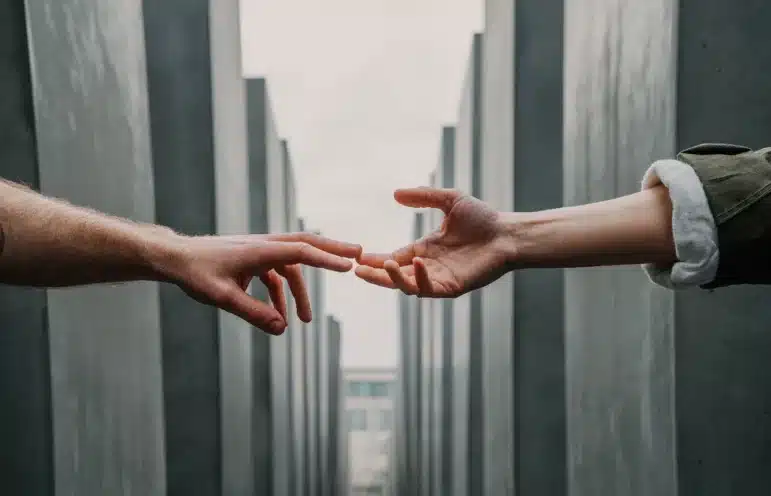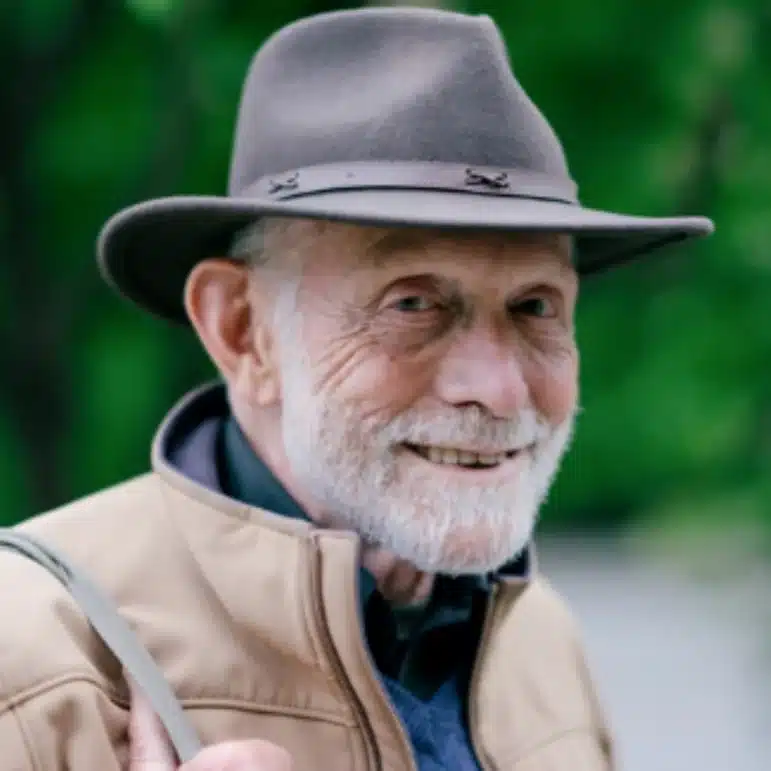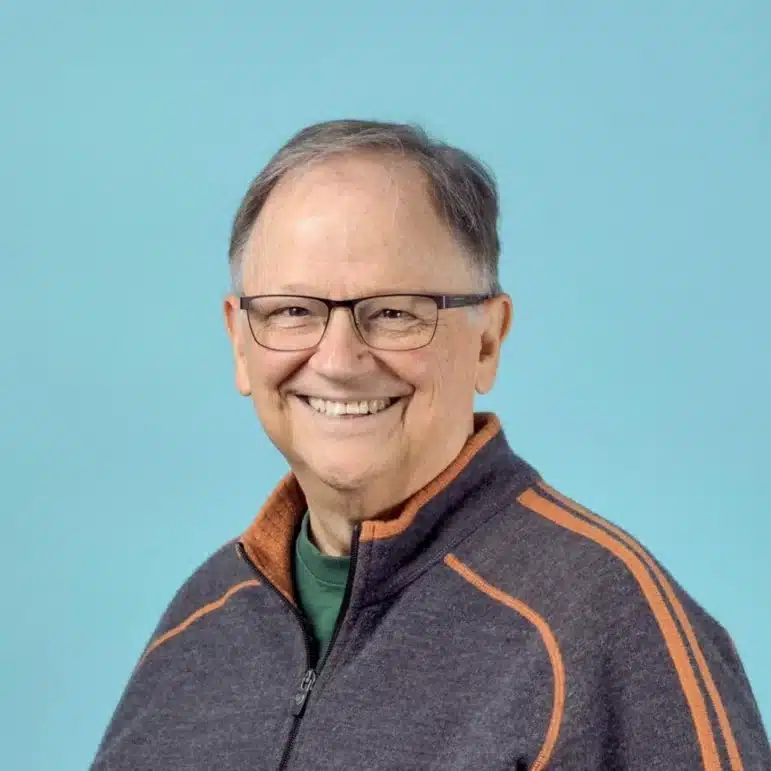Exploring Creative Solutions to Cross Divides
Press Clip Source: UnRival Network
Link to source: Here
In this edited interview, Michael Nagler (co-founder of the Metta Center for Nonviolence) and Mel Duncan (co-founder of Nonviolent Peaceforce) delve into their experiences training various communities and organizations in civil resistance and unarmed protection.
This excerpt focuses on Nonviolent Peaceforce’s work in Minneapolis during the 2020 uprisings, and their involvement in preventing violence during the elections.
Throughout the interview, they touch on:
- the importance of non-partisanship
- the innate desire for safety and security in all individuals
- and the potential for unarmed civilian protection to be a model for communities and cities across the country.
We’re grateful to the Metta Center and to Nonviolent Peaceforce for allowing us to share their stories.
Mel: We naturally came to training and supporting people for self-protection because we challenged ourselves all the time about “How would this model be sustainable?” And certainly, internationals were not going to stay there forever and no one was going to give us money ad infinitum to do so. So, we had to look at, how do we build in sustainability? That’s where the Women Protection Teams came in, for example. They were probably the first really concerted effort to organize people in self-protection. …
In Minneapolis, in early June 2020, we started really asking, is there something that we’ve learned working in various parts of the world that could apply here to the ongoing violence that we were seeing? The uprisings in St. Paul and Minneapolis were more an eruption of a lot of violence that’s been here for a long time. Did we have anything to add to this conversation? So, we started engaging with different BIPOC communities and talking about what we’ve done and what we’ve learned.
And we landed in some interesting places. One of those places, which is my favorite and I still get to work on, there is a program in North Minneapolis that’s called, “Emerge North 4.” And these are young men between the ages of 15 and 25. Many of them have lots of street experience. And we were invited in to do one training at the end of September 2020. And my heart was in my throat. I thought, “What do I have to offer these young men.” Well, we did the ‘human barometer’ to start with, and the first statement we put on the screen was, “Nonviolence is something that white people tell Black people to do when white people have no intention of doing it themselves — agree or disagree.” Everybody agreed with that statement and from there on it was an engaged, interesting conversation. We continue to meet.
As a trainer, the worst thing you can have is a non-participatory group. These guys were the opposite of that. They didn’t hesitate to tell me, “That ain’t going to work.” So, we continued training once-a-week. By election time we were working with the Service Employees International Union Local 26, as well as the Twin Cities Democratic Socialists of America, to organize poll protection teams. Because you may recall that there were advertisements in various newspapers in Tennessee soliciting security officers to come to Minneapolis to disrupt the elections and be paid $810 a day.
The Trump campaign went to the Minneapolis Police Federation, the same federation that is defending Derek Chauvin and the other former officers, seeking retirees and off-duty police to come to the polling places in the Black community, so there was an intention of harassment and intimidation.
We ended up organizing 170 people who provided nonviolent presence at 30 of the most vulnerable polling places in Minneapolis and St. Paul. The guys from Emerge were well trained enough by that point that they provided poll protection at two of the polling sites in the high school in their neighborhood. They were with status with vests, doing this important job.
My job that day was to drive around and just check in on different polling sites in a certain quadrant (we had divided it up by four). I started seeing food coming out, and music, and people talking, people staying. Shortly before the polls closed, I was at Martin Luther King Park, where there were two polling sites. As I was walking up to the poll, I got a text on our channel that a group of pickups with Trump signs had been seen coming up Highway 35 and exited into South Minneapolis, close to where I was.
I started looking around, being on watch. And by that time, there were at least 50 neighborhood people near the polling places. There was a bonfire. There was music. There was a barbecue. People laid lights along the sidewalk to illuminate the way into the polling place. And sure enough, I saw a pickup truck coming on Nicollet Avenue, with a Trump sign. I thought, “Okay. We better be ready.”
They didn’t even slow down. And I was reminded at that point that whether it is South Minneapolis or South Sudan, the foundation for true security is an engaged community. The disrupters couldn’t intimidate that group; they were having too much fun.
“You know, I have always hated you people. But now I see that you have the same color blood in you that we have.”
Michael: That reminds me of after the Montgomery Bus Boycotts, when it was all over, it was all settled, somebody threw a bomb. And the community, which had experienced its nonviolent strength and its communality together, they paid absolutely no attention. And, you know, the bomb fizzled. They had defanged the violence. You’re reminding me of the story, Mel, that comes from Meta Peace Teams based in Michigan.
Annually, there was a kind of Klan rally, and every year people would come out from a neighborhood who hated the Klan and there would be trouble and sometimes bloodshed. And Meta Peace Teams, with very small groups (which kind of illustrates the power of nonviolence and the innateness of it in human nature) was there with their vests on. The police were very, very happy to have them there. A captain would say sometimes to officers going to a scene were trouble was brewing, “You don’t have to go over there, the Peace Team will take care of it.” This time there was a fellow who was wearing this black leather jacket, which was kind of strange as it was a very hot day. At one point, he took his jacket off and he had swastikas and all kinds of inflammatory tattoos all over him. And sure enough, some Antifa – or Antifa predecessor – jumped on this guy, and I’m sorry to say, actually hit him over the head with a bottle. And he fell to the sidewalk. Immediately, the Peace Team collected around him to protect him and got him on his feet and walked him over to a waiting car, accompanied by his tearful girlfriend.
When they got to the car, one of the people on the team said to this man, who couldn’t answer, but he could hear them, “I just want you to know that today your life was saved by a Jew, a communist, and a Black lesbian,” or something like that. He couldn’t respond. But his girlfriend said something that has really stuck with me. She said, “You know, I have always hated you people. But now I see that you have the same color blood in you that we have.”
This seems to me to get to the heart of what we call, “non-partisanship.” That when you can show that you don’t disrespect the other person and you’re there not for Side A or for Side B, but for peace and human dignity, it touches a chord.
Mel: These stories take on the status of legends … When we do stakeholder analysis as part of our training — unwrapping the onion about what people say they want, what they feel they want, and what is at the foundation — when we do this with groups we are training in Minneapolis, we find that whether it be a National Guardsman, or a Black Lives Matter participant, or a white supremacist, at the core, they all want to go home safely at night or the next day, or whenever. They all want to go home safely. And so, that’s a commonality that we can work with, whether it’s blood or safety, finding those common points that we share as humans and building on those.
So, these young men [of North 4] did the poll monitoring that day, and there was one what I would call “moderate,” incursion by an outsider trying to disrupt the polls — one event at all of the 30 polls. There were a few things, you know, people driving around in cars and looking at us and so on.
The North 4 Brothers, as they call themselves, did so well that we continued working with them. And next, along with some other members from Nonviolent Peaceforce, provided protection at a demonstration on Lake Street, which was the street that saw the most destruction last June. We’ve continued coming once a week and working with them and doing trainings. It still is my favorite time of the week, Tuesday mornings.
Then in December, the director of a local K-9 parochial school called Ascension, was talking to a grants officer from a foundation that funds Ascension. They also had given us a little money to start doing the work in Minneapolis. This director was saying, “My job is to keep the staff and the scholars safe, and I take that very seriously because every day, usually several times a day, I hear gunshots. So, we hired a professional security analyst who came out and did a full analysis of the school and gave us recommendations,” And then the director said to the staff from the foundation, “But they didn’t match our values.” To which she responded, “Have you heard of Nonviolent Peaceforce?”
A couple days later I’m talking with the director. Ascension School is two blocks from Emerge. In fact, we can see it out the second-floor window where we do our training. So, we started talking. I brought together the director of the North 4 program and the director of Ascension. I felt like I was presiding over a wedding. They got along so quickly, and they had known each other — not very well, but had known each other over the years.
That turned into working with the North 4 fellows to provide unarmed security for Ascension School. And I’m happy to say that this week the first of the brothers were hired as full-time employees for a living wage, plus benefits. They also got their COVID vaccine and uniforms. They’ve decided at Ascension, to call the brothers, “Peacekeepers,” so they have “Peacekeeper” emblazoned across their uniform. That is going to be their job, and three more start this coming Monday.
The director of North 4 is saying, “Wait a minute — there’s lots of places that have these needs.” So we’ll watch this and nurture it. But also, we’ll look at how we continue to provide this kind of training. The brothers just want a good life and a safe community. This model has tremendous potential across the country.
They all want to go home safely. And so, that’s a commonality that we can work with, whether it’s blood or safety, finding those common points that we share as humans and building on those.
Michael: [And] it shows that it doesn’t have to be top-down organization. There were several very good examples of that recently: you had DC Peace Team, Meta Peace Teams, NP, and I don’t know how many other groups all doing very similar work in a, I would say, coordinated but not hierarchically controlled process.
Mel: Let’s say a communicated process.
Michael: Communicated process. That’s a good way to put it. Let’s say, simultaneous, communicated process.
Mel: I think it very, very significant is last June [2020] the Minneapolis school board voted not to renew their contract with the Minneapolis police so there would no longer be Minneapolis police in the schools. That left the school safety and security people in the middle of June saying, “What the hell do we do here?” They were thinking school would start at the end of August. Little did they know.
So, they hired what they called, “specialists.” There were problems with hiring process, I know that. That is a bit concerning. But then they contracted with us and we did a week-long full mission preparedness training with them in October and a refresher with them in March because they’re still not in the schools, except some of the ones working in the elementary schools who float. But the ones who are stationed in the high schools, haven’t. I mean they’ve been there; the students haven’t been there. We work through all kinds of scenarios of how to deal with possible conflicts in nonviolent ways.
And I think that this very well could be a model for other school districts that would rather have social workers in the schools than police. You have to deal with security in some way, so deal with it unarmed and engage the entire school community in their collective security.
Michael: A model not just for school districts, but for cities, for neighborhoods. That’s wonderful. A wonderful, wonderful story. And I hope that people can hear it and respond to it, and the future will continue growing in exactly this direction.
Want to learn more about creative peacebuilding? Here are some other noteworthy articles to explore:



